ВУЗ: Казахская Национальная Академия Искусств им. Т. Жургенова
Категория: Книга
Дисциплина: Не указана
Добавлен: 03.02.2019
Просмотров: 21600
Скачиваний: 19
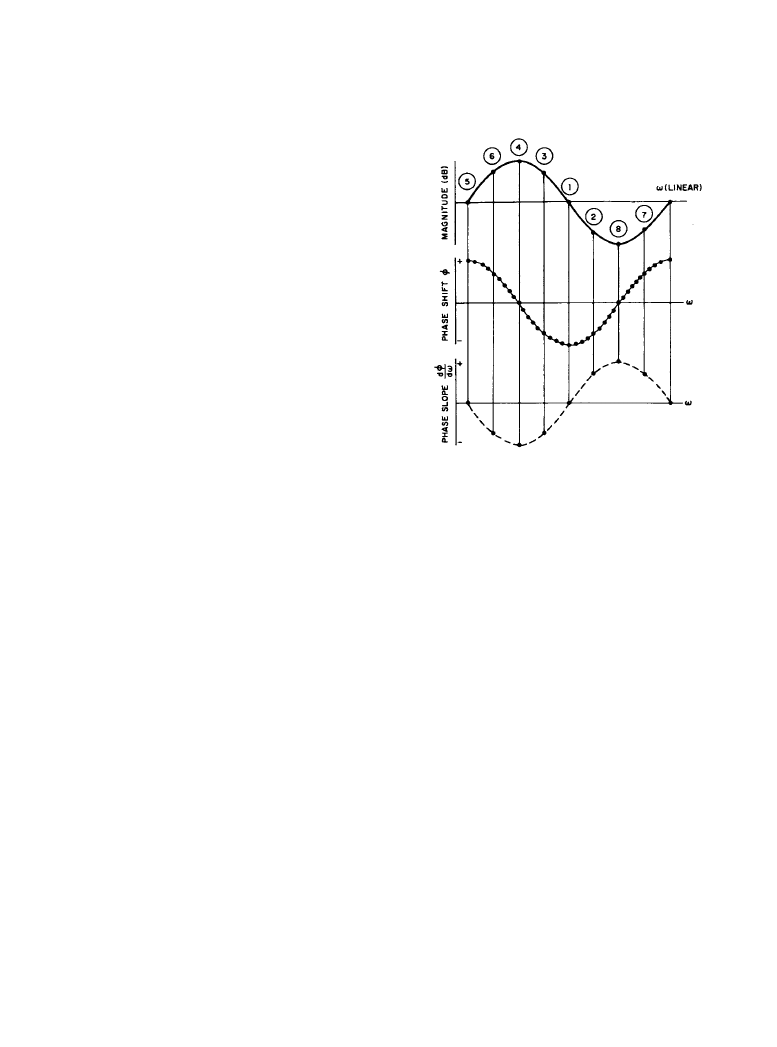
2-32 The Audio Spectrum
expresses the phase shift at relative to that at
.
Because no restrictions have been placed upon the behavior of
or its derivative, each
may assume positive, zero, or negative values throughout the frequency range of interest. There
are, therefore, several different possible combination pairs of phase shift and phase slope. Each
of these presumably would affect the response to a transient signal differently. A preliminary dis-
cussion of the influence of these aspects of phase response on transient signals is given in the
next section together with supporting experimental measurements.
2.2.3a
Some Effects of Frequency Response on Transient Signals
An important class of linear systems used in a variety of applications, called minimum-phase
systems, has mathematically interrelated magnitude and phase responses. These responses are
not independent of one another. Specifying one determines the other.
Figure 2.2.5 summarizes the possible relationships between magnitude response, phase shift,
and phase slope versus linear frequency for a general minimum-phase system. For example, a
narrow bandpass system could have a magnitude response characteristic like that from 5-6-4-3-1,
and the associated phase-shift and phase-slope characteristics would be the corresponding por-
tions of those curves below. In a very wideband system the distance between points 5 and 1 on
the frequency axis would be considerably greater and the curve 6-4-3 much flatter; also the cor-
responding sections of the phase and phase-slope curves would require appropriate modification.
In a similar way, 1-2-8-7 could represent the magnitude response for a narrowband-reject filter
which would have the appropriately corresponding phase and phase-slope curves as shown.
d
φ
d
ω
------
ω
0
ω ω
0
–
[
]
ω
ω
0
φ ω
( )
Figure 2.2.5
Possible relationships among
magnitude, phase, and phase slope versus lin-
ear frequency for a general minimum-phase
system. The numbered vertical-line segments
each connect a different combination of these
three quantities (based on algebraic signs) and
indicate important test frequency ranges where
transient response may differ.
Downloaded from Digital Engineering Library @ McGraw-Hill (www.digitalengineeringlibrary.com)
Copyright © 2004 The McGraw-Hill Companies. All rights reserved.
Any use is subject to the Terms of Use as given at the website.
Spectral Changes and Linear Distortion
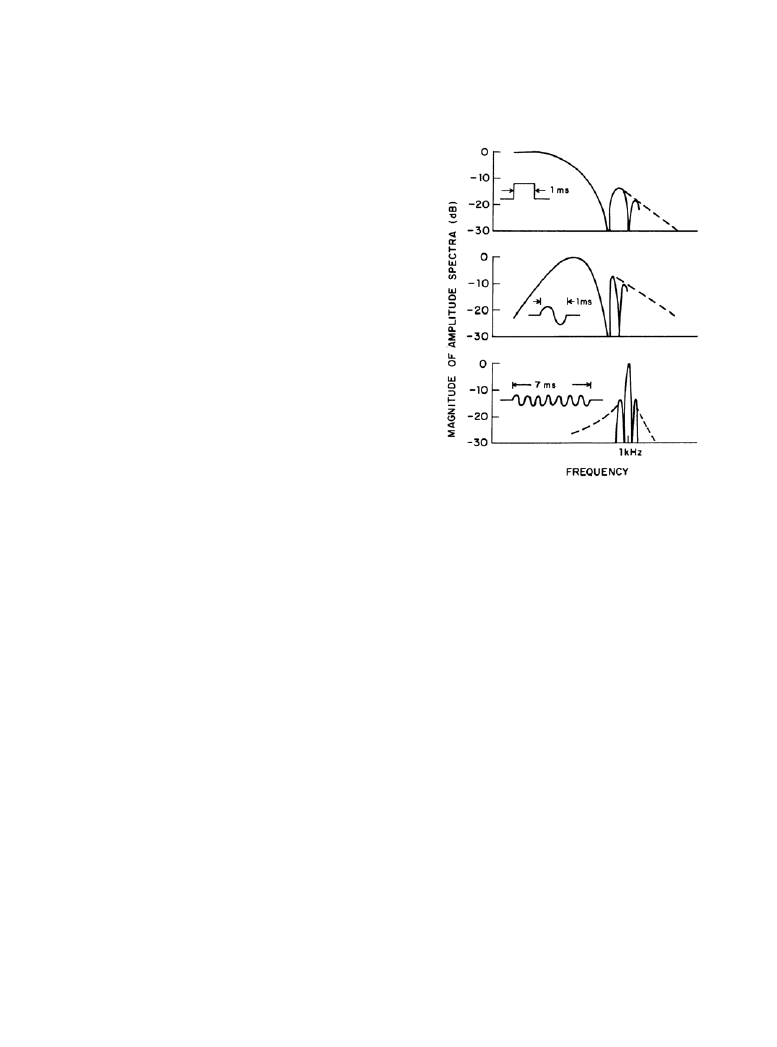
Spectral Changes and Linear Distortion 2-33
The steady-state characteristics of the minimum-phase system shown in Figure 2.2.5 are also
interconnected by eight numbered vertical lines. These numbers indicate important test points
(or frequency ranges) where phase shift and phase slope are, in various combinations, positive,
zero, and negative. Experimentally measured effects of each of these eight different combina-
tions of
and
/
on three different transient signals, illustrated along with their spectra
in Figure 2.2.6, are shown in Figure 2.2.7. The three test signals were a 1-ms-wide rectangular
pulse, a single cycle of a l-kHz sine wave, and a 7-ms tone burst at 1 kHz.
The eight different combinations of phase shift and phase slope in Figure 2.2.4 were simu-
lated, in each case, near 1 kHz by using a five-band graphic equalizer as the minimum-phase sys-
tem. In each of these eight cases, the linear distortion of transient signals is quite different. Here,
the influence of complex frequency response on the system response to transient signals can be
explained, qualitatively, in terms of the algebraic signs of phase shift and phase slope. Table 2.2.1
categorizes the eight test cases on this basis. Tables 2.2.2 and 2.2.3 summarize some general
effects which the algebraic sign of the phase shift and the phase slope (at 1 kHz) has on response
to transient signals.
For the tone bursts, it appears that the actual numerical value of influences the “inner”
structure of the waveform, whereas
/
mostly affects the envelope, or “outer” structure.
This is consistent with the approximation in Equation. (2.2.3c)
with
/
= 1 kHz
Positive values for both and
/
imply that is positive and increasing near
, and
this results in sharp and abrupt transient behavior. If and
/
are both negative, then is
φ ω
( )
d
φ dω
φ
d
φ dω
φ ω
( )
φ ω
0
( )
d
φ
d
ω
------
ω
0
ω ω
0
–
(
)
+
=
ω
0
2
π
φ
d
φ dω
φ
ω
0
φ
d
φ dω
φ
Figure 2.2.6
Magnitude of the spectral density in
decibels versus frequency for test signals used to
evaluate the response of a general minimum-
phase system to transient signals. The dashed
lines indicate the upper bound for the continuing
spectral peaks.
Downloaded from Digital Engineering Library @ McGraw-Hill (www.digitalengineeringlibrary.com)
Copyright © 2004 The McGraw-Hill Companies. All rights reserved.
Any use is subject to the Terms of Use as given at the website.
Spectral Changes and Linear Distortion
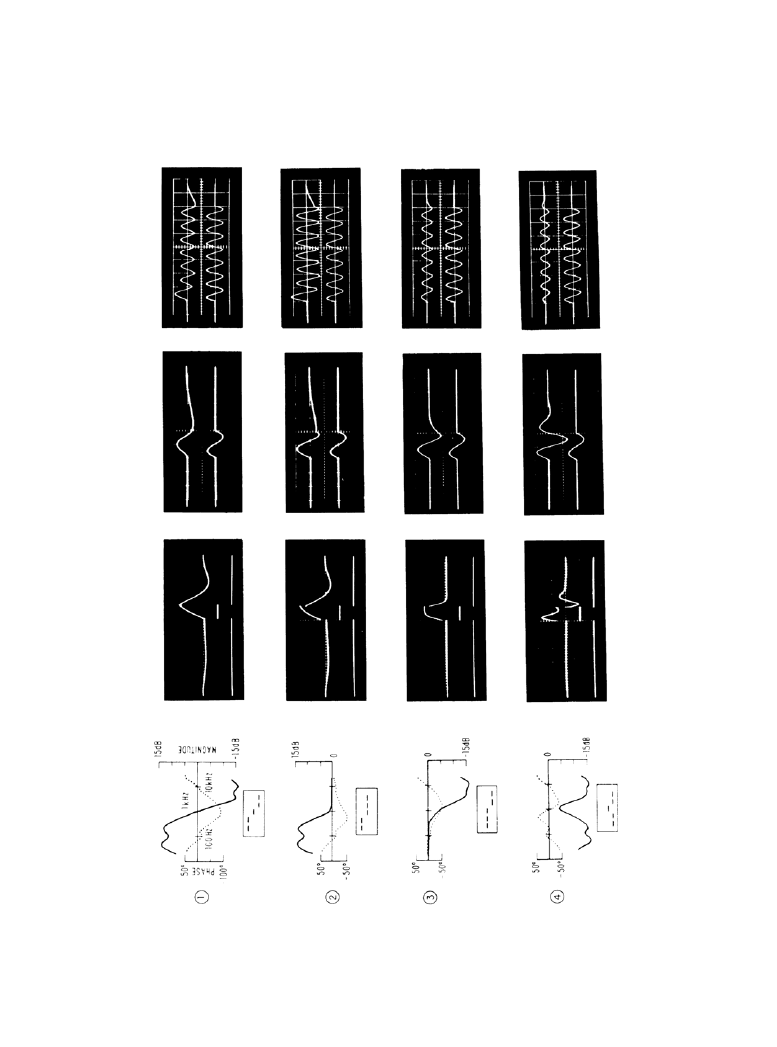
2-34 The Audio Spectrum
Downloaded from Digital Engineering Library @ McGraw-Hill (www.digitalengineeringlibrary.com)
Copyright © 2004 The McGraw-Hill Companies. All rights reserved.
Any use is subject to the Terms of Use as given at the website.
Spectral Changes and Linear Distortion
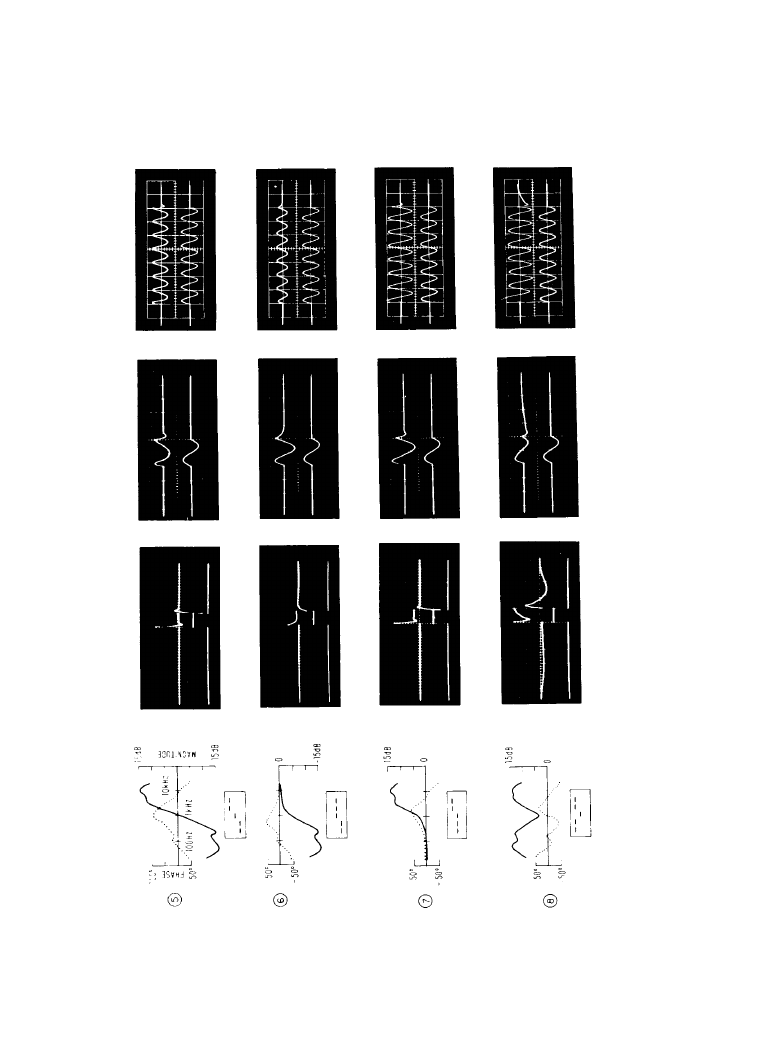
Spectral Changes and Linear Distortion 2-35
Fi
gur
e 2.
2.
7
C
o
m
par
is
o
n
o
f
s
te
ady
-s
ta
te m
agn
it
ud
e an
d pha
se r
esp
on
se m
ea
s
u
rem
e
nt
s
(
of
a
f
iv
e
-b
and
grap
hi
c equ
al
iz
er
)
w
it
h
resp
ons
es
t
o t
he
t
rans
ie
nt
s
ig
na
ls
w
ho
s
e
sp
ec
tr
a
ar
e g
iv
e
n i
n
Fi
gur
e
2.
2.
6.
Th
es
e e
ig
ht
ca
se
s c
or
re
s
po
nd
t
o t
he
ei
gh
t t
est
p
oi
n
ts
f
o
r
the
m
in
im
um
-pha
se
sy
st
em
i
n F
ig
ur
e 2
.2
.5 no
rm
a
liz
e
d t
o
a f
re
qu
enc
y ra
nge
ne
ar
app
ro
xi
m
at
el
y
1 k
H
z.
(
S
ys
te
m
ou
tp
ut
an
d i
np
ut
si
g
-
na
ls
are
show
n i
n t
h
e up
per
and
l
o
w
er
t
ra
c
es,
r
esp
ec
ti
v
el
y.
)
Downloaded from Digital Engineering Library @ McGraw-Hill (www.digitalengineeringlibrary.com)
Copyright © 2004 The McGraw-Hill Companies. All rights reserved.
Any use is subject to the Terms of Use as given at the website.
Spectral Changes and Linear Distortion
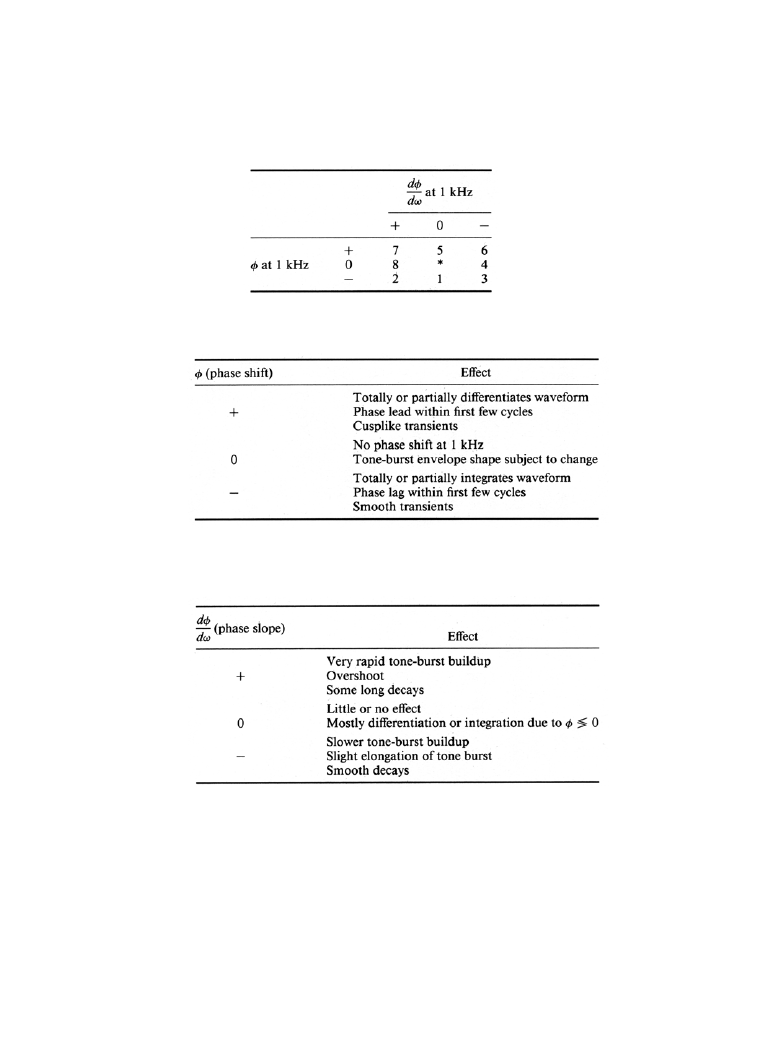
2-36 The Audio Spectrum
becoming more negative, and this yields smoother, slower transients. When the phase shift and
phase slope have opposite signs, these opposing effects are seen to combine.
Perhaps the most interesting case occurs when
but
(see Figure
2.2.7, cases 4 and 8). For the very-narrow-spectrum tone burst there is no steady-state phase shift
as expected; however, the response to the wide-spectrum rectangular pulse in these two cases is
remarkable. These results may be interpreted in the following way. Because the rectangular pulse
φ ω
0
( )
0
=
d
φ/dω
[
]
ω
0
0
≠
Table 2.2.1 Categories of Test Cases
Table 2.2.2 Phase Shift Effects
Table 2.2.3 Phase Shift Effects
Downloaded from Digital Engineering Library @ McGraw-Hill (www.digitalengineeringlibrary.com)
Copyright © 2004 The McGraw-Hill Companies. All rights reserved.
Any use is subject to the Terms of Use as given at the website.
Spectral Changes and Linear Distortion